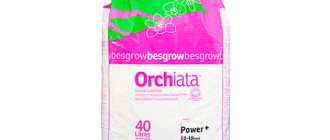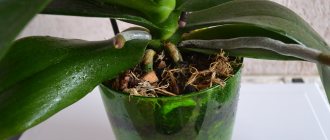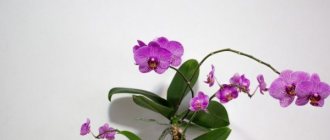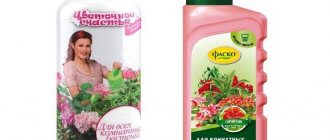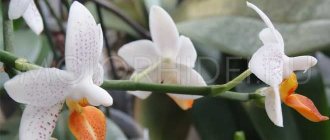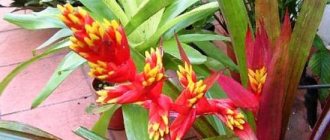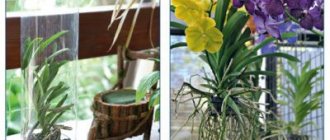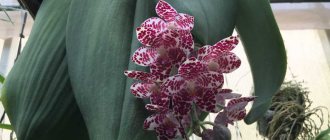Orchids are grown on soil that retains moisture well. At the same time, good aeration is important for flowers. Substrates are often used instead of organic soil mixture. Plants are planted in expanded clay, perlite, vermiculite, and oak bark.
Flower growers recommend using ZeoFlora substrate from a domestic manufacturer. Why do home plant growers prefer it? How is the substrate used?
How to choose in the store and the best composition
When choosing ready-made soil for orchids, it is important to pay attention to the following details:
- incoming components, they can be: vermiculite, expanded clay, tree bark, coconut fiber or chips, as well as swamp moss (the mixture should not contain earthen soil);
- what types of orchids is it intended for?
- size of bark fractions (indicated on the package);
- date of manufacture (live moss is often present on fresh substrates);
- presence/absence of mold (transparent packaging allows you to see this).
Upon visual inspection, the soil for orchids should be a mixture of fractions of different sizes.
It should not be black and look like earth. It is best to give preference to well-known manufacturers, after reading reviews about them.
Main characteristics
ZeoFlora is based on zeolite-containing tripoli. The deposit was developed in the town of Khotynets, Oryol region. The rock is sedimentary. It is crushed and exposed to high temperatures. The result is terracotta-colored crushed stone. Manufacturers produce substrates of various fractions. ZeoFlora for orchids has granule sizes from 2 to 9 mm.
- The substrate is porous. There is a lot of air in it. It provides good aeration to the roots of flowers.
- The material quickly absorbs water and retains it for a long time. It can raise the solution to a height of 10-15 cm. Ceoflora provides moderate moisture to plants. The granules gradually release moisture to the roots. At the same time, gas exchange processes in tissues are not disrupted.
- The crushed stone is light and does not damage the orchid roots.
- Zeolite does not support the development of bacteria and fungi.
- Insects such as flies and mosquitoes do not settle on it.
- The unique composition of tripoli helps maintain plant nutrition and soil fertility.
- Crushed stone has good adsorbing characteristics.
The manufacturer sells a separate substrate for garden crops, for balcony and indoor plants. Soils differ in the size of the granules, but their characteristics are the same. What is Ceoflora for orchids? This is crushed stone of medium and large fraction, made from sedimentary rock of tripoli, which contains zeolite.
The chemical composition of the soil is represented by silicon, aluminum, and iron oxide. Tripod contains potassium, calcium, magnesium, molybdenum, boron, manganese, iron and other trace elements. All of them are gradually washed out of the stones. Plants take them up at a certain period of the growing season.
A distinctive feature of zeolite is that the minerals it contains are easily absorbed by plants.
Other substrates, such as perlite and vermiculite, have similar characteristics. Perlite is closer to zeolite. They go well together. They can be mixed. The materials have almost the same moisture capacity, 50-70%. The pores are not completely filled with water. There is air left in them.
We recommend: How to use ZeoFlora cactus soil?
Foam glass has similar properties. Vermiculite is also suitable for orchids, but it retains moisture for too long. Expanded clay dries out too quickly, but the substrate is not bad. It is also often used by flower growers.
Orchids are tropical plants. For them, it is necessary to alternate between low and high humidity. ZeoFlora for orchids compares favorably with other substrates with its rich mineral content.
Pros and cons of the finished substrate
Industrial soil has several significant advantages:
- various packaging;
- high moisture capacity;
- ease;
- the content of micro- and macroelements necessary for the full growth of the plant;
- wide selection for different varieties of orchids.
The disadvantages include:
- peat content in some compositions, which affects the acidity of the soil;
- uneven fraction of expanded clay and tree bark;
- in many cases the presence of pests and pathogens;
- high price (from some manufacturers and sellers).
How to prepare?
Before planting a flower on the substrate, it is necessary to prepare both the crushed stone and the plant. The orchid roots are freed from soil, washed, and laid on a dry Ceoflora substrate. This is done so that the granules take moisture from the roots. On clean and dry shoots it is easier to notice damage.
View this post on Instagram
Publication from ZeoFlora
